Art Collectors
L.A. Collector Eileen Harris Norton on a Lifetime Spent Championing Artists of Color
Her new book ‘All These Liberations’ debuts at Frieze Los Angeles.
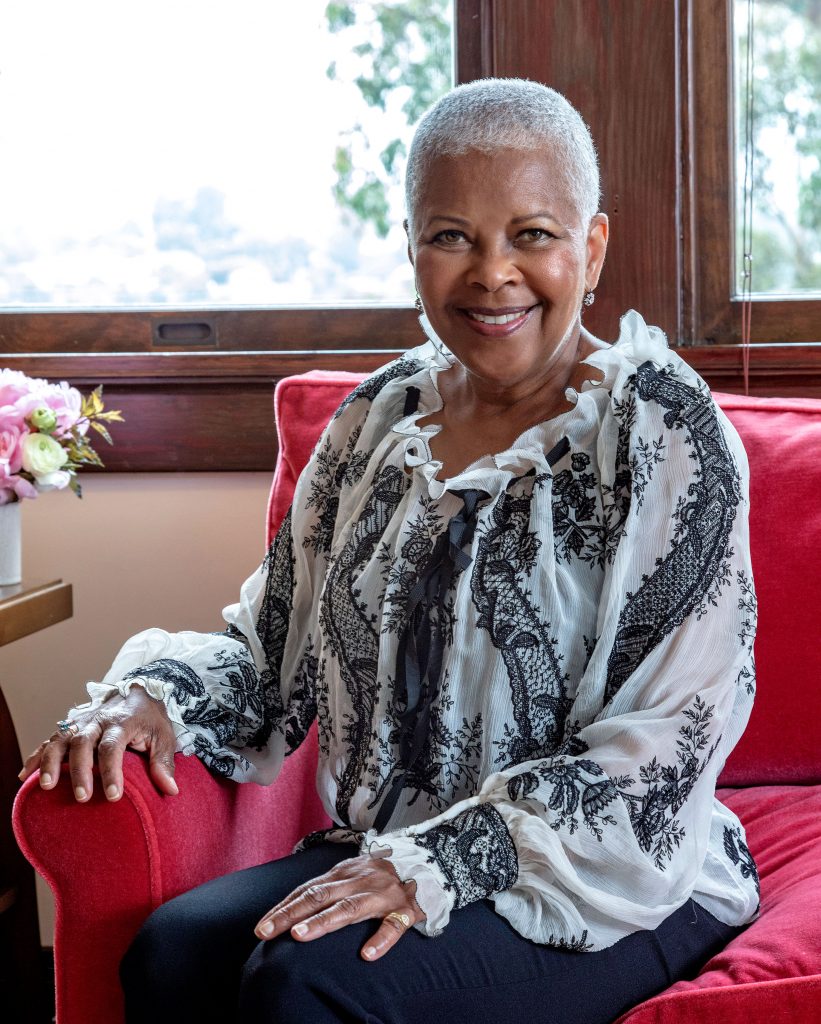
In what is sure to be a highlight of Frieze Los Angeles this year, Eileen Harris Norton will debut her book All These Liberations, in a panel discussion about the dramatic rise of the city’s contemporary art scene in recent decades, as well as the collector and philanthropist’s role as an indefatigable champion of artists of color, particularly women.
The scholarly tome—edited by Taylor Renee Aldridge, a curator at the California African American Museum (CAAM), who will join the discussion along with artist Alison Saar—places Harris Norton at the heart of a burgeoning milieu of marginalized voices starting in the 1980s and traces the social and civic purpose with which she has approached collecting. That is to say, with boundless curiosity and compassion.
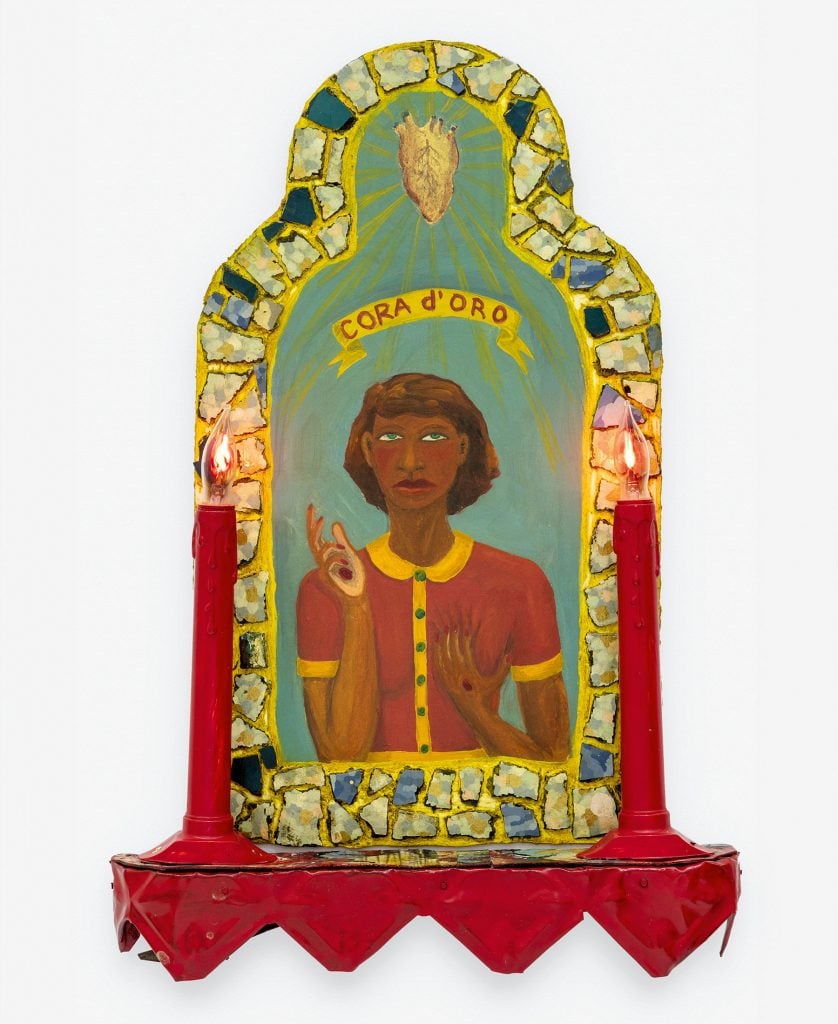
Alison Saar, Cora d’Oro (1985), from the collection of Eileen Harris Norton. © Alison Saar. Courtesy of L.A. Louver, Venice, CA
“Let me just hold it up for you because it’s so beautiful,” Harris Norton offered on a video call from her home in Santa Monica, thumbing through its pistachio-green pages. “I have a very broad collection,” she added. “I have Nara, I have Murakami, but I had a narrow focus with the book—women artists of color.” Hundreds of works by dozens of artists such as Lorna Simpson (who wrote the foreword), Carrie Mae Weems, Kara Walker, Sonia Boyce, Lorraine O’Grady, Julie Mehretu, and Faith Ringgold, are gathered and recognized. Each piece, each artist, each exhibition is, as the title hints, a liberation.
Harris Norton’s art journey began in 1976 when, as a college student, she went with her mother to visit a Black History Month exhibition inside a mall, after seeing an ad in the Los Angeles Times. “We went in and there’s Ruth Waddy with her woodblock prints. I had no idea there was this older Black woman creating art right in my backyard. It was only through Steven Nelson’s essay [in the book] that I learned what a critical force she was in the Black Arts Movement.” She struck up a conversation with the artist and, at her mother’s urging, bought several linocuts, including her first acquisition, The Exhorters (1976).
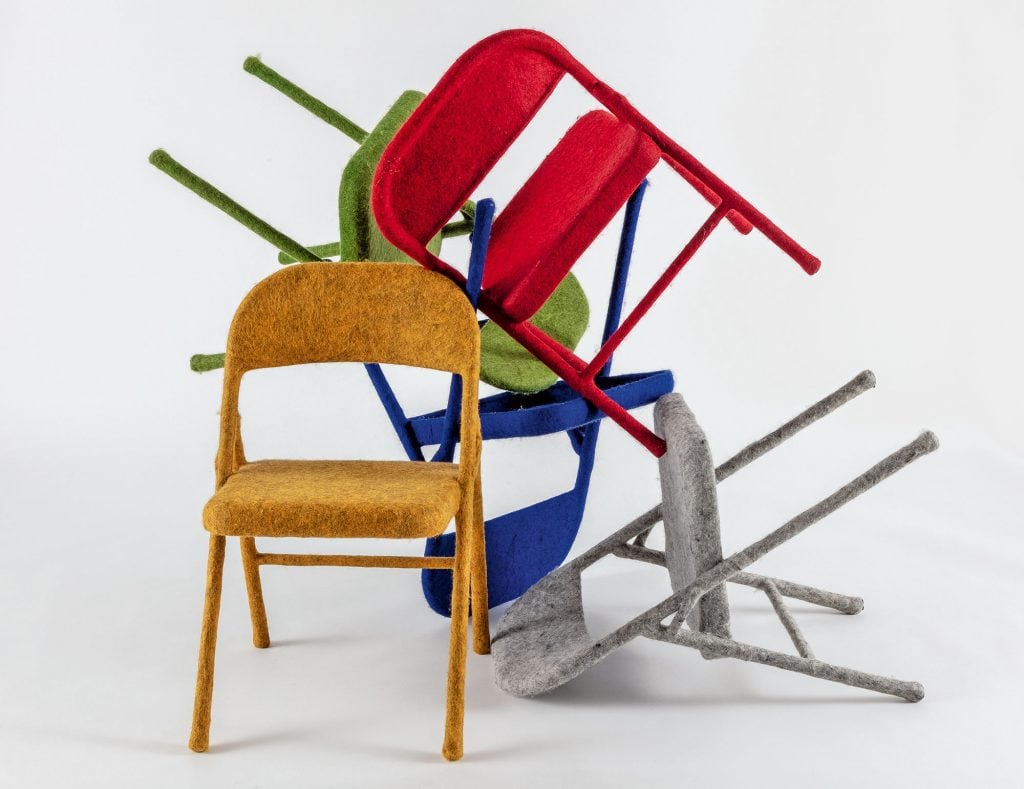
Tanya Aguiñiga, Felt Chairs (2012). © Tanya Aguiñiga. Courtesy of Volume Gallery and the artist.
In 1981, while working as a schoolteacher, she met Peter Norton, whom she later married. They worked on building his fledgling software company while just as tirelessly exploring the thriving art scene of Venice, California. “In the beginning, we knew nothing about art,” she said. “But we lived in Venice, so we would just walk around to all these open studios. I think Chris Burden was doing one of his performance pieces in one of the spaces. We’re talking early days, and we’d walk around and be like, ‘Look at all these young Black artists, how fabulous.’ These were young artists who weren’t being shown, who weren’t being recognized, and we asked, ‘Why not?’”
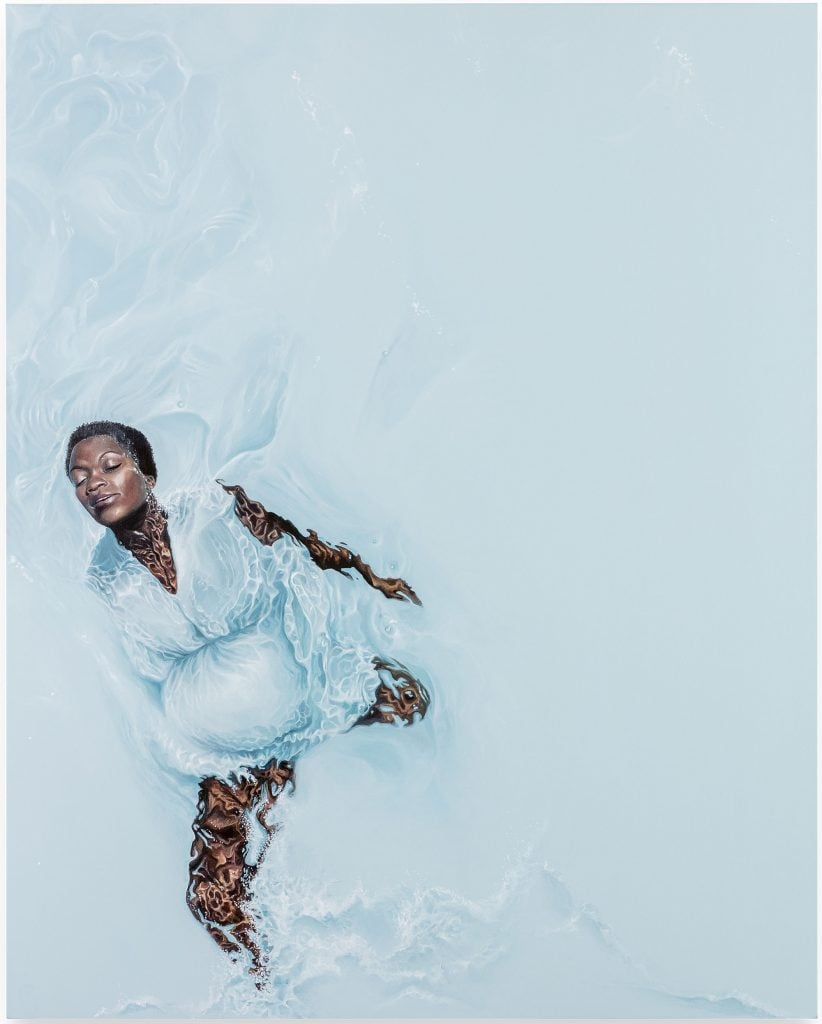
Calida Rawles, Wade, Ride This Wave of Mine (2020). © Calida Rawles. Courtesy of the artist and Various Small Fires, Los Angeles/Seoul.
Their forays into art collecting and patronage took on a new and pecuniary dimension in 1990 when they found a buyer for the business they’d been toiling on. Suddenly the Nortons, who’d already been running with the art crowd, now had ample means to purchase their works. “Glenn Ligon, Gary Simmons, Lorna Simpson, Carrie Mae Weems,” she lists. “We met Cathy Opie, too. We have early Cathy Opies. We met and supported them all.”
Then came a pivotal encounter with Thelma Golden, now the director at the Studio Museum in Harlem, but then a curator at the Whitney Museum. In the book, Golden credits Harris Norton for making possible her 1994 landmark exhibition “Black Male” at the Whitney, which was funded in part through the Peter Norton Family Foundation and later traveled to the Hammer Museum in Los Angeles. Said Harris Norton, “We hosted a conversation at our home and invited everybody because ‘Black Male’ was such a thing. At that point, we really started meeting everybody and realized, yeah, we’re collectors.”
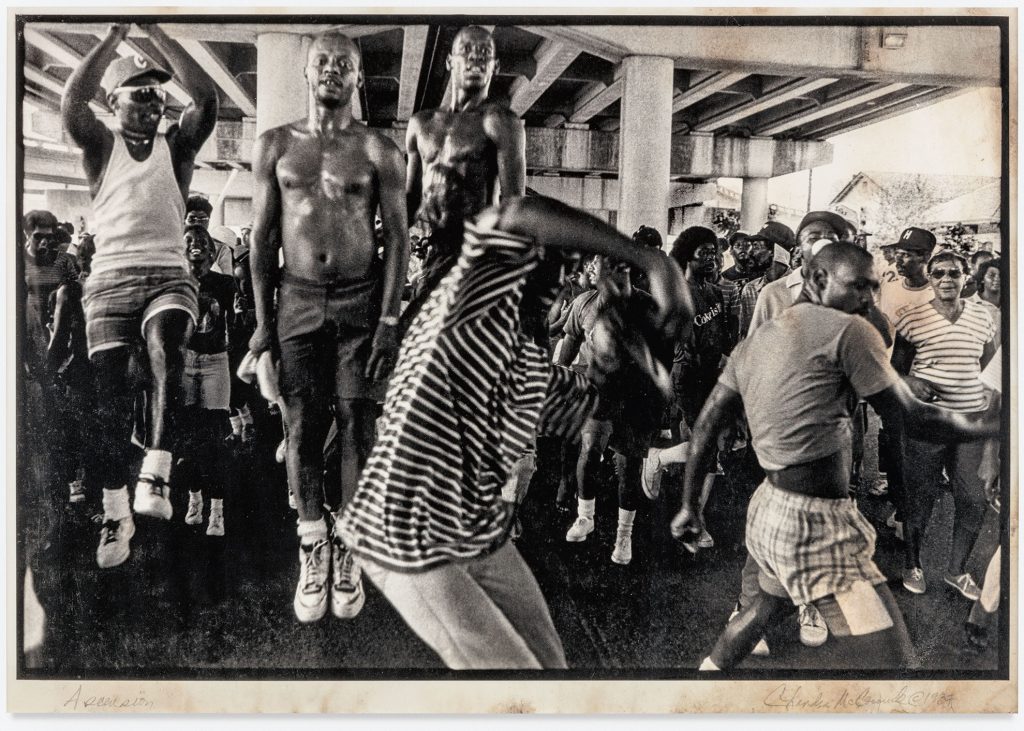
Chandra McCormick, Ascension (2005). © Chandra McCormick
Though the couple separated in 2000, Harris Norton delved further into the L.A. art world—and toward her next pivotal encounter. “I met Mark Bradford just before the exhibition ‘Freestyle’ at the Studio Museum in 2001. Thelma gave me a list of artists to see, who she was looking to put in the show. I knew who some of them were, but not Mark, so I went to see him in his little studio in Inglewood. He took one look at me and said, ‘Your hair ain’t cute.’ I just looked at that man and said, ‘Well, can you do better?’ He goes, ‘Yeah, I can do better, come to the shop,’ meaning his mother’s hair salon, which later became his studio. We became friends immediately. He’d do my hair, I’d buy his art.”
Their friendship was cemented in 2013 with Art + Practice (A+P), a nonprofit Harris Norton established alongside Bradford (who in 2017 represented the U.S. at the Venice Biennale) and his partner, community activist Allan DiCastro. Free and open to the public, A+P partners with art institutions including the Hammer Museum, the Baltimore Museum, and most recently CAAM, to offer art programming across three sites in Leimert Park, South L.A. “There’s no other art in the area—or museum-quality art,” said Harris Norton.
Yet A+P was envisioned as a place for youth outreach as well. “We wanted to do more than art,” she stressed. “Mark would notice all these kids walking by the space during the day. He asked them, ‘Why aren’t you in school?’ and it turned out they were foster kids,” transitioning out of foster care. “We researched it and it turns out that Los Angeles, particularly in that area, has one of the largest concentrations of displaced foster youth in California, even in the country. We saw that as a need of the community.” They reached out to two local foster-youth organizations, RightWay Foundation and First Place for Youth, and gave them space to operate out of. “And more recently we’ve partnered with Nest Global,” she added, “which works with refugee children. L.A. and the southern part of California has a large influx of immigrants.”
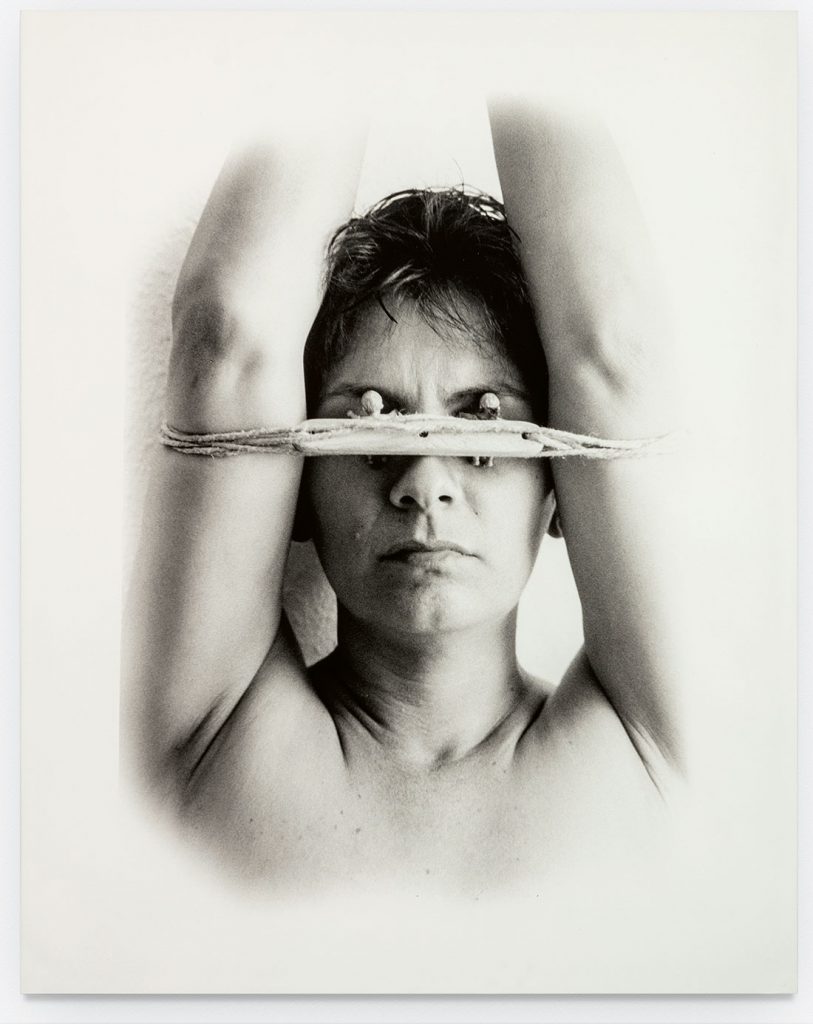
Marta María Pérez Bravo, No vi con mis propios ojos (I did not see with my own eyes) (1991). © Marta María Pérez Bravo.
Looking back on her art collection, Harris Norton recalls a few of the more memorable pieces, among them Rodney McMillian’s painting-slash-edifice Representation of a Landscape as a Wall (2012) and Liza Lou’s Kitchen (1991–96), a full-scale reconstruction of an average American kitchen, boxes of cereal and all, but using beads only. “It was fabulous because it came apart. So they constructed it in our home and Liza lives here so she came and approved it. The kids were young at the time and they’d bring all their friends to see it. I don’t own it anymore, we donated it to the Whitney.”
Shows no signs of slowing down of late, Harris Norton has only redoubled her collecting. “I just bought a Lyle Ashton Harris,” she said. “We met him through Thelma in the 1990s and I’ve been friendly with him and his brother [Thomas Allen Harris] through the years. I also bought a Betye Saar in the last year. She’s like 93 or 94 and still working! I started collecting Betye in the 1990s, too. It seems like my favorite artists are still the ones I started collecting back when.”





